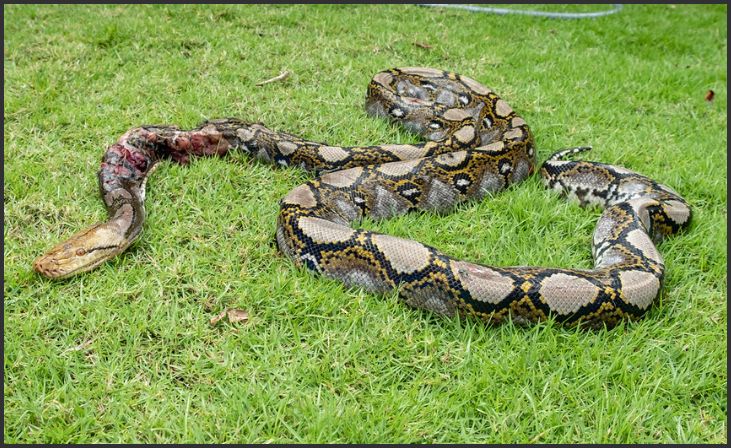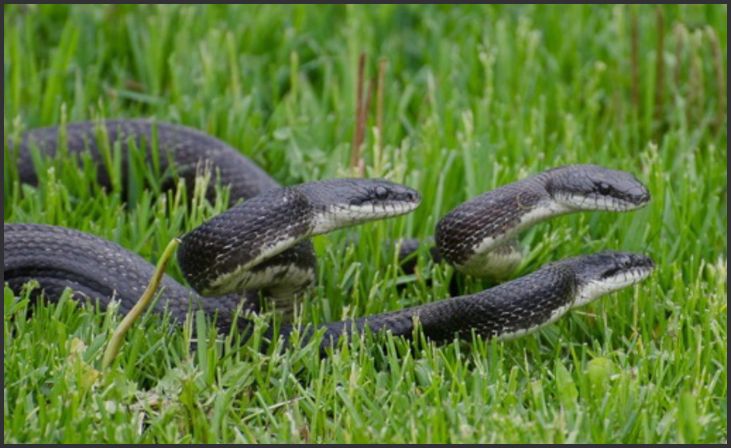Snakes are often misunderstood creatures, yet they play vital roles in maintaining ecological balance. In this article, we delve into the lives of America’s nine biggest snakes, exploring their characteristics, habitats, and impacts on the environment.
Eastern Diamondback Rattlesnake
The Eastern Diamondback Rattlesnake holds the title of the largest venomous snake in North America. Recognizable by its distinctive diamond-shaped patterns and the iconic rattle at the end of its tail, this snake can grow up to eight feet long. It primarily inhabits the southeastern United States, thriving in pine forests, coastal scrublands, and wet prairies.
Despite its fearsome reputation, the Eastern Diamondback Rattlesnake is crucial for controlling rodent populations. By preying on rats and mice, it helps prevent the spread of diseases and protects crops from damage. However, due to habitat destruction and human encroachment, its numbers are declining, leading to increased conservation efforts.
Burmese Python

The Burmese Python is an invasive species that has established a significant presence in Florida. Originally native to Southeast Asia, these snakes were introduced to the US through the exotic pet trade. Known for their impressive size, with some individuals exceeding 18 feet, Burmese Pythons are formidable predators capable of consuming large prey, including deer and alligators.
Their introduction has wreaked havoc on local ecosystems. Native wildlife, such as small mammals and birds, have suffered drastic population declines due to the python’s predatory efficiency. Efforts are ongoing to control their numbers, including organized hunts and public awareness campaigns to prevent their spread.
Indigo Snake
The Indigo Snake is a native species renowned for its striking indigo-blue coloration. Growing up to eight feet in length, this non-venomous snake inhabits various environments, from pine flatwoods to hardwood forests across the southeastern United States.
Indigo Snakes play a unique role in their ecosystems by preying on venomous snakes like rattlesnakes and copperheads, thereby controlling their populations. Their presence is indicative of a healthy, balanced ecosystem. Unfortunately, habitat loss and illegal collection for the pet trade have put them at risk, prompting protective measures and conservation programs.
Green Anaconda
Though not native to the United States, sightings of the Green Anaconda have raised concerns, particularly regarding the exotic pet trade. These South American giants are among the largest snakes in the world, capable of reaching lengths over 20 feet and weighing more than 200 pounds.
Green Anacondas are semi-aquatic, often found in swamps, marshes, and slow-moving rivers. Their presence in the US, especially in Florida, is troubling due to the potential threat they pose to local wildlife and ecosystems. They have powerful constricting abilities and can consume prey as large as wild pigs and caimans. Conservationists urge stricter regulations on the pet trade to prevent their establishment in the wild.
Reticulated Python

The Reticulated Python, another giant of the snake world, occasionally appears in the wild in the US, particularly in Florida. Native to Southeast Asia, these snakes are known for their incredible length, often exceeding 20 feet, and their beautiful, intricate patterns.
Their presence in the US is mainly attributed to escaped or released pets. Reticulated Pythons pose similar ecological threats as the Burmese Python, preying on native wildlife and potentially disrupting the balance of local ecosystems. Their striking appearance and size make them popular in the pet trade, but this also contributes to the challenges of managing their populations in the wild.
Rock Python
The African Rock Python has a limited but concerning presence in the United States, especially in Florida. Known for their size and aggressive nature, Rock Pythons can grow over 16 feet long. They have a distinctive pattern of irregular brown and olive markings.
Their introduction to the US is likely due to the exotic pet trade. Rock Pythons compete with native species for food and habitat, posing a significant threat to the local wildlife. Their aggressive behavior and large size make them particularly challenging to manage. Conservationists advocate for stricter control measures to prevent further spread.
Boa Constrictor
Once popular as exotic pets, Boa Constrictors have become an invasive species in parts of South Florida. These snakes are highly adaptable, capable of thriving in various environments, from tropical forests to urban areas. They typically reach lengths of 10 feet and possess a distinctive saddle-like pattern along their bodies.
Boa Constrictors are proficient hunters, preying on a wide range of animals, including birds, mammals, and amphibians. Their adaptability and hunting prowess pose a threat to local wildlife, leading to calls for population control and habitat protection. Public education campaigns aim to reduce the number of released or escaped pet boas.
Eastern Ratsnake

The Eastern Ratsnake, also known as the Black Ratsnake, is a native constrictor essential for controlling rodent populations in the eastern United States. These snakes can grow up to seven feet long and are typically black with a white or yellow underside.
Eastern Ratsnakes are generally docile and non-venomous, making them beneficial to human habitation. They often inhabit forests, fields, and even barns, where they help keep the rodent population in check. Their presence is a sign of a healthy ecosystem, and they play a crucial role in maintaining the balance between predator and prey.
Coachwhip Snake
The Coachwhip Snake, named for its whip-like appearance, is one of the longest snakes in the southern United States. These snakes can reach lengths of up to eight feet and are known for their speed and agility. They have a distinctive coloration that often fades from dark on the head to lighter shades towards the tail.
Coachwhip Snakes inhabit a variety of environments, including open woodlands, grasslands, and deserts. Their speed and predatory skills make them effective hunters of insects, lizards, and small mammals. Despite their size, they are non-venomous and pose no threat to humans, playing a vital role in controlling pest populations.

